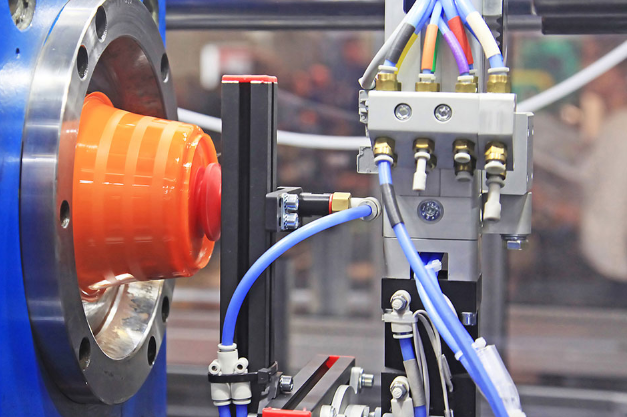
The extra plastic that results from the injection molding process is commonly referred to as “flash” or “burrs.” Here are some key details about flash and other types of excess plastic that can occur during injection molding:
1. Flash
- Definition: Flash is a thin layer of excess plastic that can form at the parting line or seams of the mold where the two halves meet. It occurs when molten plastic leaks out of the mold cavity during injection.
- Causes: Flash can be caused by various factors, including:
- Excessive Injection Pressure: Too much pressure can force plastic out of the cavity.
- Worn or Damaged Mold: A mold that is not properly maintained or has worn surfaces can allow plastic to escape.
- Improper Clamping Force: If the clamping force is insufficient, the mold halves may not stay tightly closed during injection.
- Mold Design Issues: Poor mold design, such as inadequate venting or mismatched mold surfaces, can also lead to flash.
2. Sprue, Runners, and Gates
- Sprue: The sprue is the channel through which the molten plastic is injected into the mold. After molding, the sprue is often trimmed away from the finished part.
- Runners: Runners are the channels that distribute the molten plastic from the sprue to the various cavities in the mold. Runners are also trimmed off after molding.
- Gates: Gates are the smaller channels that connect the runners to the mold cavities. Excess material from the gates is typically trimmed off the finished parts.
3. Overflow Wells and Vents
- Overflow Wells: These are areas in the mold designed to collect excess plastic and prevent it from flowing back into the part cavities. They help to manage the flow of plastic and reduce defects.
- Vents: Vents are small openings in the mold that allow air and gases to escape during the injection process. Excess plastic can sometimes enter these vents, which also needs to be trimmed off.
4. Purging
- Purged Material: During the maintenance and cleaning of injection molding machines, purged material, which is the plastic expelled from the machine to clean out old material or color changes, can accumulate. This purged plastic is often recycled or discarded.
[elementor-template id=”4330″]
Managing and Minimizing Excess Plastic
- Mold Maintenance and Design:
- Regularly inspect and maintain molds to prevent wear and ensure tight seals.
- Design molds with precise parting lines and adequate venting to minimize flash.
- Process Optimization:
- Adjust injection pressure and clamping force to optimal levels.
- Monitor and control process parameters to maintain consistency.
- Material Selection:
- Use materials with appropriate flow properties to reduce the likelihood of flash and other defects.
- Consider using additives that improve the molding process and reduce excess material.
- Trimming and Recycling:
- Implement efficient trimming processes to remove flash, sprue, runners, and gate material.
- Recycle trimmed material where possible to reduce waste and cost.
Conclusion
The extra plastic produced during the injection molding process, known as flash, can be managed through proper mold design, maintenance, and process optimization. Understanding and controlling the causes of flash and other excess materials can improve product quality and manufacturing efficiency.
Related Conten: Custom Plastic Extrusions
 DTG Mould Trade Process |
|
| Quote: | According to sample, drawing and specific requirement. |
|---|---|
| Discussion | Mold material, cavity number, price, runner, payment, etc. |
| S/C Signature | Approval for all the items. |
| Advance | Pay 50% by T/T |
| Product Design Checking | We check the product design. If some position is not perfect, or can not be done on the mould, we will send customer the report. |
| Mold Processing | Send report to customer once each week |
| Mold Testing | Send trial samples and try-out report to customer for confirmation |
| Mold Modification | According to customer’s feedback. |
| Balance Settlement | 50% by T/T after the customer approved the trial sample and mould quality. |
| Delivery | Delivery by sea or air. The forwarder can be designated by your side. |
 |
|

